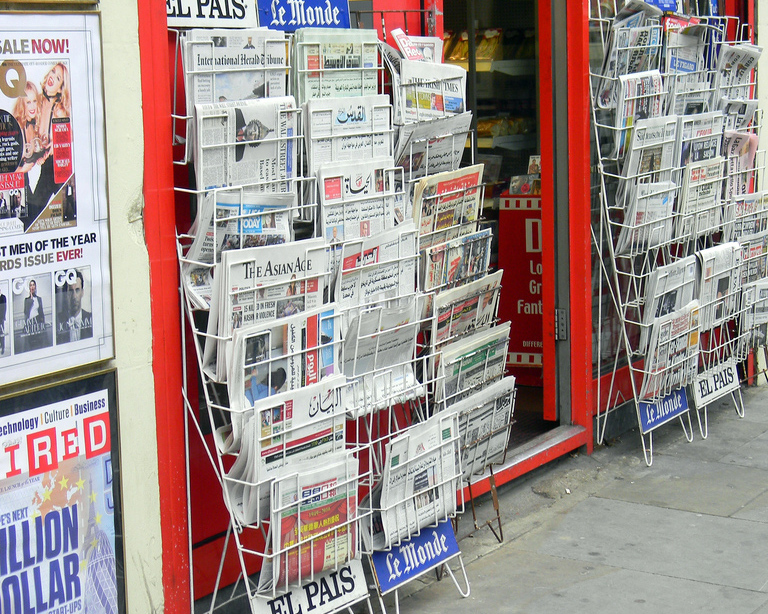Writing effective headlines for the Web is really important for anyone wanting to learn the art (and science) of good Web writing. There are many differences between Web headlines and print headlines:
Print Headlines should be Sharp
In print, page presentation, images and accompanying text can increase a headline’s impact. Words like “BIG CRASH” make sense in fat bold letters above a photo of car accident. Print headlines have impact and presence and can be great for getting people to notice stories. (Keep this in your mind).
Some characteristics of print headlines:
• Photos or images lend context. Print headlines often have images and text to support them and make the stories relevant to readers. A two-word headline has little chance of making sense without a big photo summing up the story.
• Text size can help headlines make impact. When readers see huge bold text above the fold, they know that the story is likely an important read. Big text will likely draw the reader in – and often sell more papers.
• Subheads make extra push to readers. How many times have you read a headline and then moved directly to the subhead? Readers want more context.
• Print headlines show up in one place. Print headlines on the front of the newspaper do not show up again on the inside sections.
• Print headlines do not change. Once the paper is printed, you cannot recall the day’s papers and change your stories’ headline.
Web Headlines Must Tell the Whole Story
On the Web a headline like “BIG CRASH” would make little sense without its context. Headlines should take on the role of telling the entire story in limited words. A headline might appear in Google as a search result link. It might appear in a blog feed as a syndicated headline-link. It might also appear in a person’s Bookmark/Favourite (where they put it six months ago). And then what meaning would “BIG CRASH” have to anyone?
Consider again the “BIG CRASH” headline that we saw in print. Imagine seeing that headline on the Web without any pictures or context, what would you think – stock market, a building collapsing; two prop forwards running into each other at speed … or a car accident?
Without putting that headline in context, a reader cannot know what the story is about. It is imperative that Web headlines tell the story.
Some characteristics of Web headlines:
• Web headlines appear in many places on a site. Web headlines can be syndicated with RSS to show up on many places.
• Web headlines pop up on external sites. Through RSS, headlines can be syndicated on Google News, other news sites, blogs, wherever. This is great because the more places your RSS feed appears, the more chance of increased readership you get.
• Web headlines must get the point across. Your news sites’ headlines can appear anywhere on the Web without its supporting content, it is incredibly important to be able to convey the point of the story with just text, and convey it immediately.
• Your headline will not necessarily be the headline others use. Web users often share your stories on social media sites and write their own headlines for your content. So the better the headline you write, the less likely Web users will have to edit your headlines to make them relevant.
• You can change Web headlines! This is one of the great things about the Web. If a headline you wrote for the morning’s story does not seem to say the right thing, you can change it any time. On the Web, you can edit any content in real time!
• Many people are accessing the Web on mobile phones and other hand-held devices. Size doesn’t matter – your words need to have lasting impact. Keep it short, simple and to the point.
Regard Headlines as Critical Content
So, now you know how Web headlines fit into the whole scheme of Web writing, let’s see if we can put together a bit of a “to do” list:
• Be simple, literal and direct (don’t use puns)
• Use the active voice
• Don’t use all caps
• Don’t start a sentence with a number if you can help it
• Start your headline with your main keyword/ keyword phrase
Writing effective Web headlines is crucial. Try it for a few months and you’ll see the difference.
About the Author:

She has written profiles, features, advertising copy, obituaries, press releases, and columns in magazines, company newsletters and newspapers, and written and produced corporate scripts.
Since she stopped writing political speeches (after 13 years in the trenches), she has focused on writing for the web and presenting workshops on communications-related issues. She is a Feature Writer at Suite 101.com (http://www.suite101.com/profile.cfm/ethekwinigirl).
Karen tutors the Writing for the Web Course and the Writing for Social Media Course at the Writers’ College.
Photo credit: flickr.com_Jeremy Brooks













